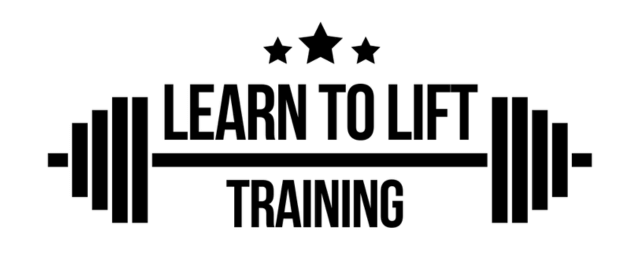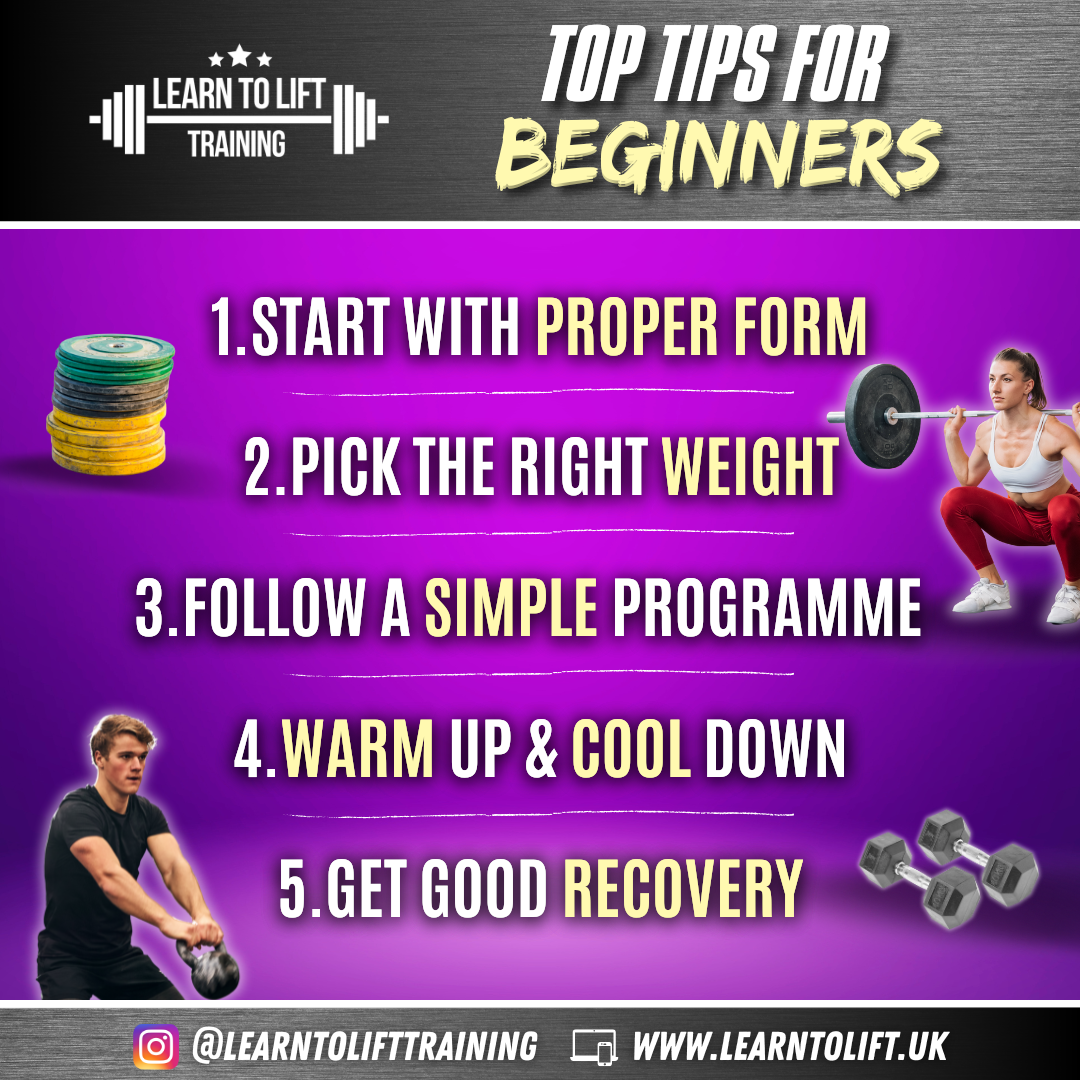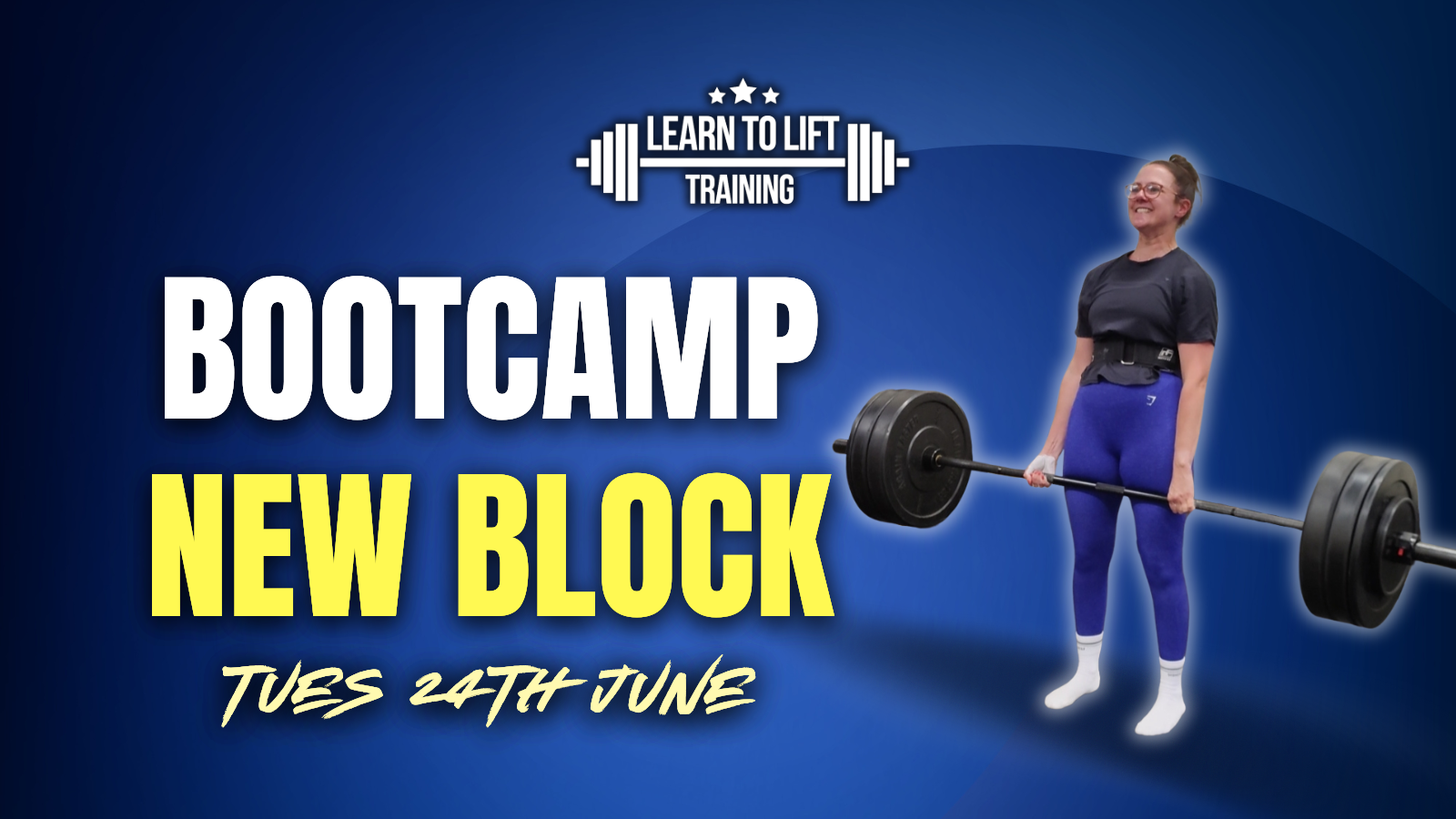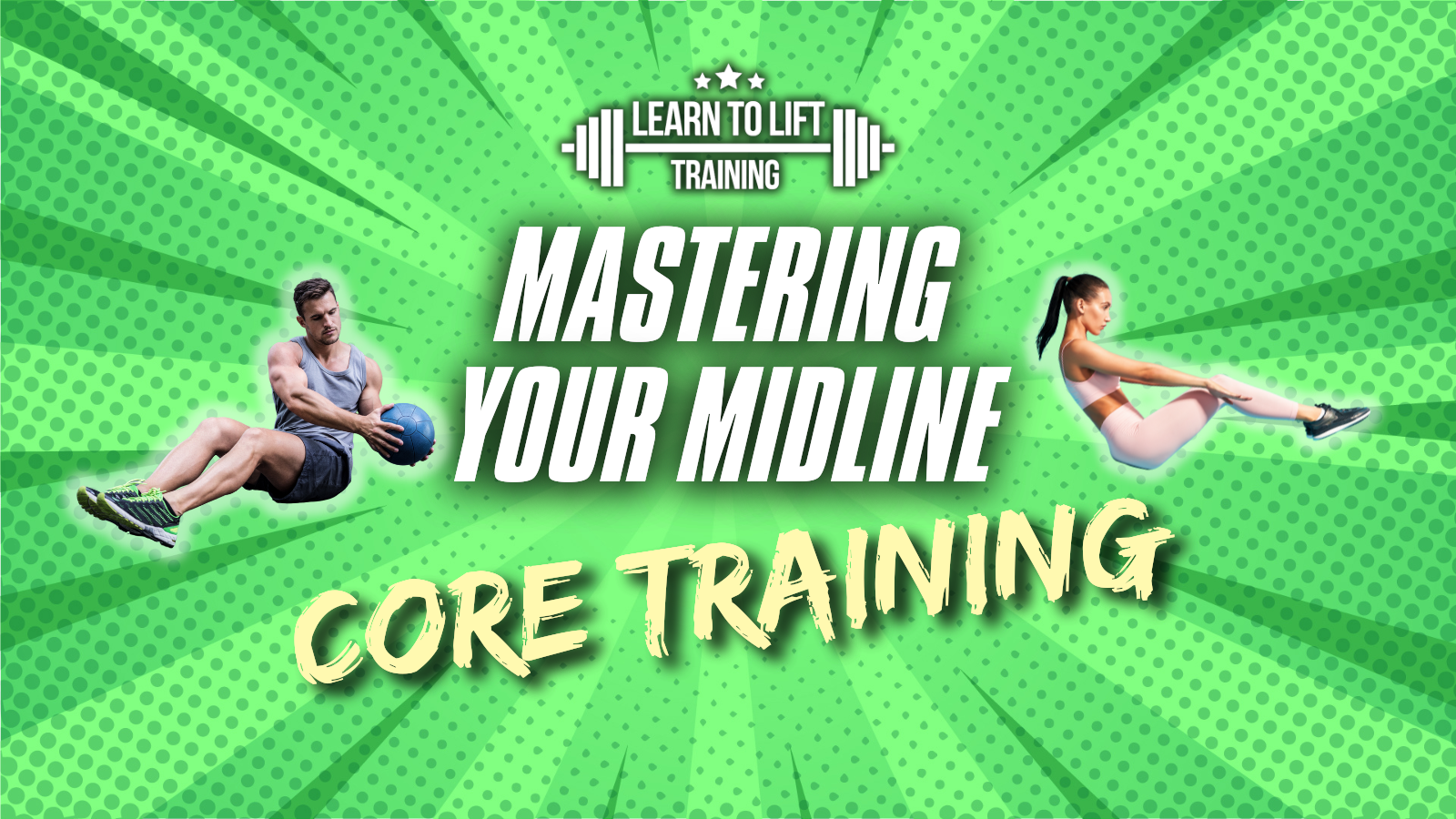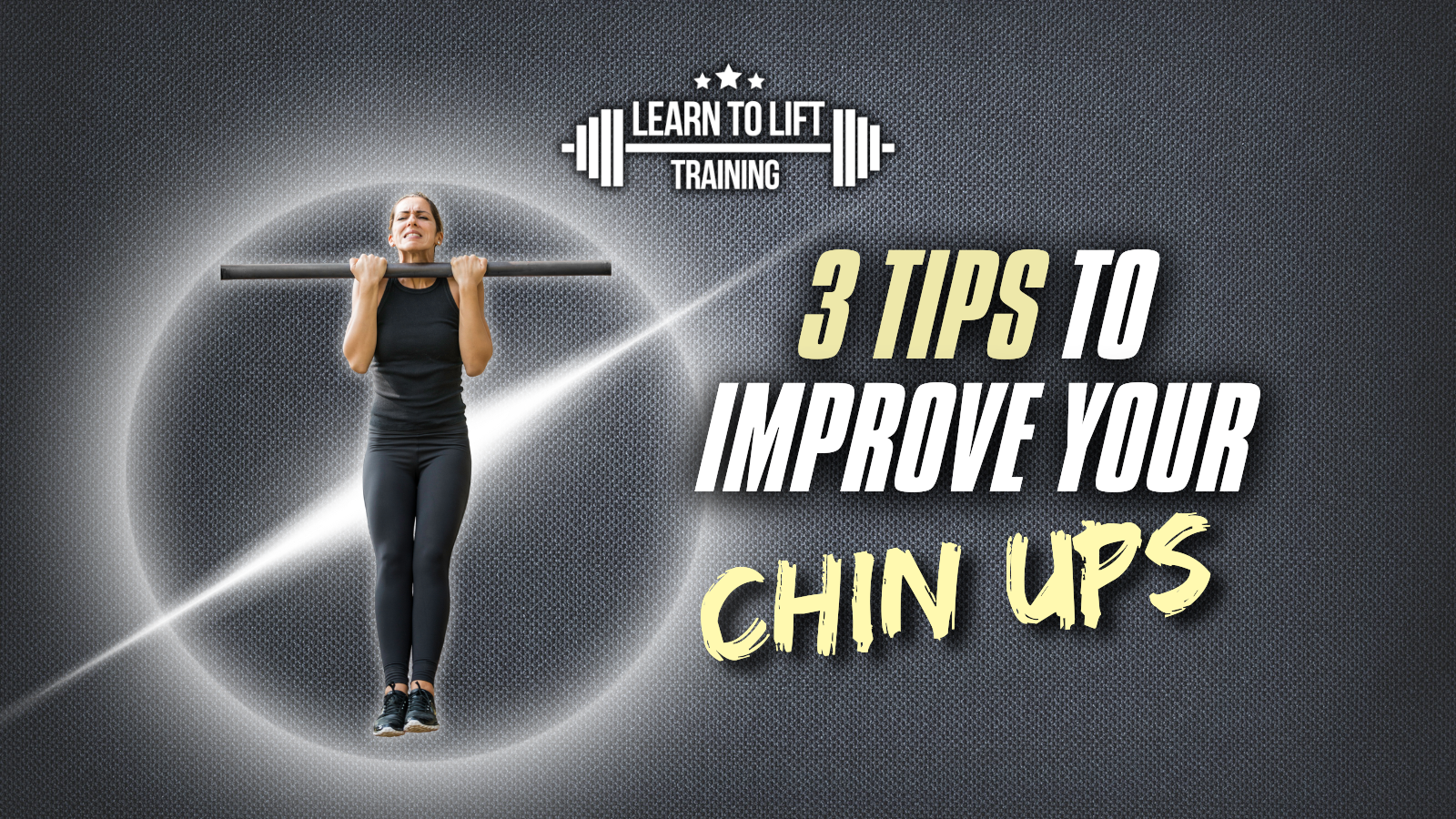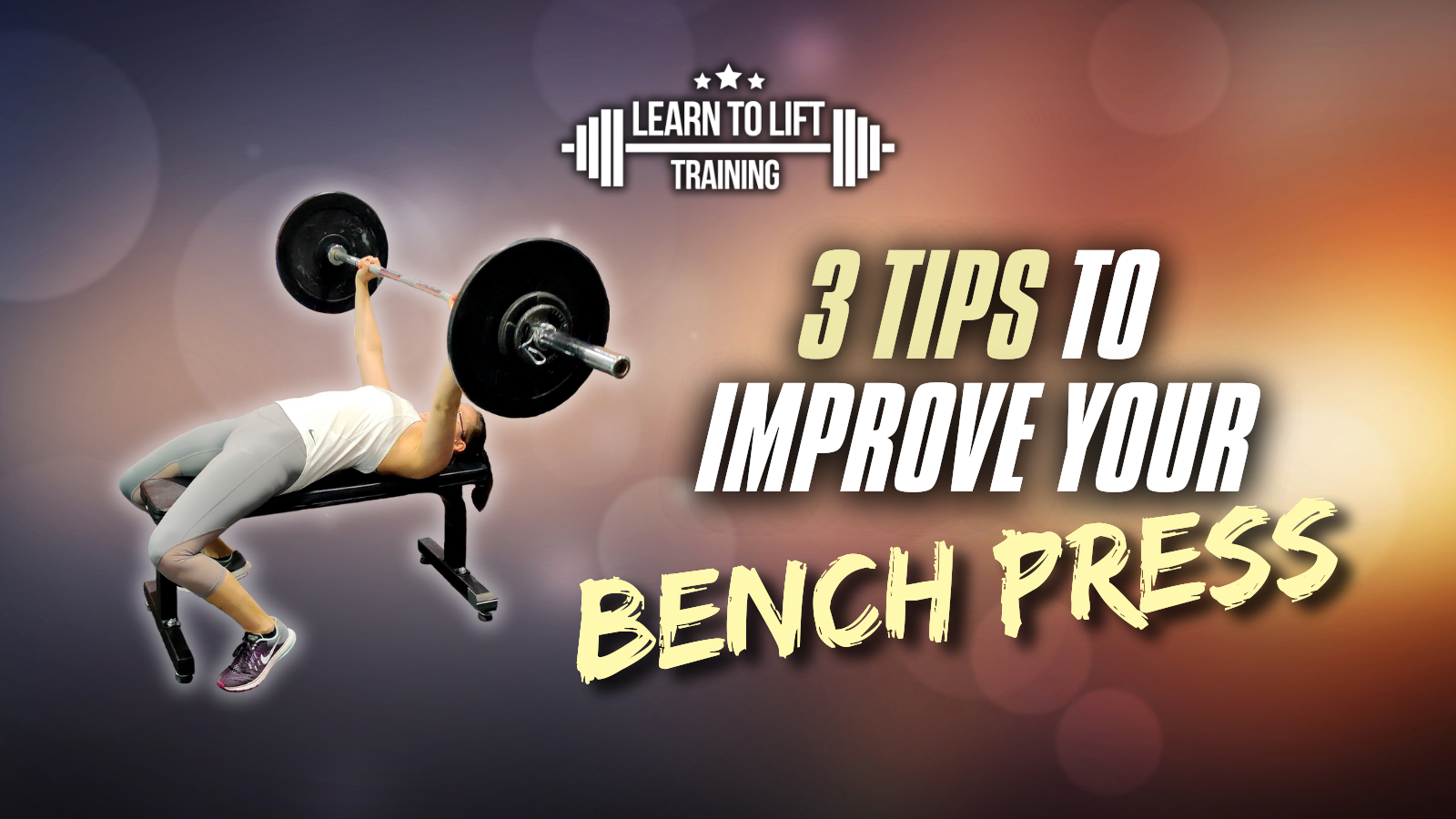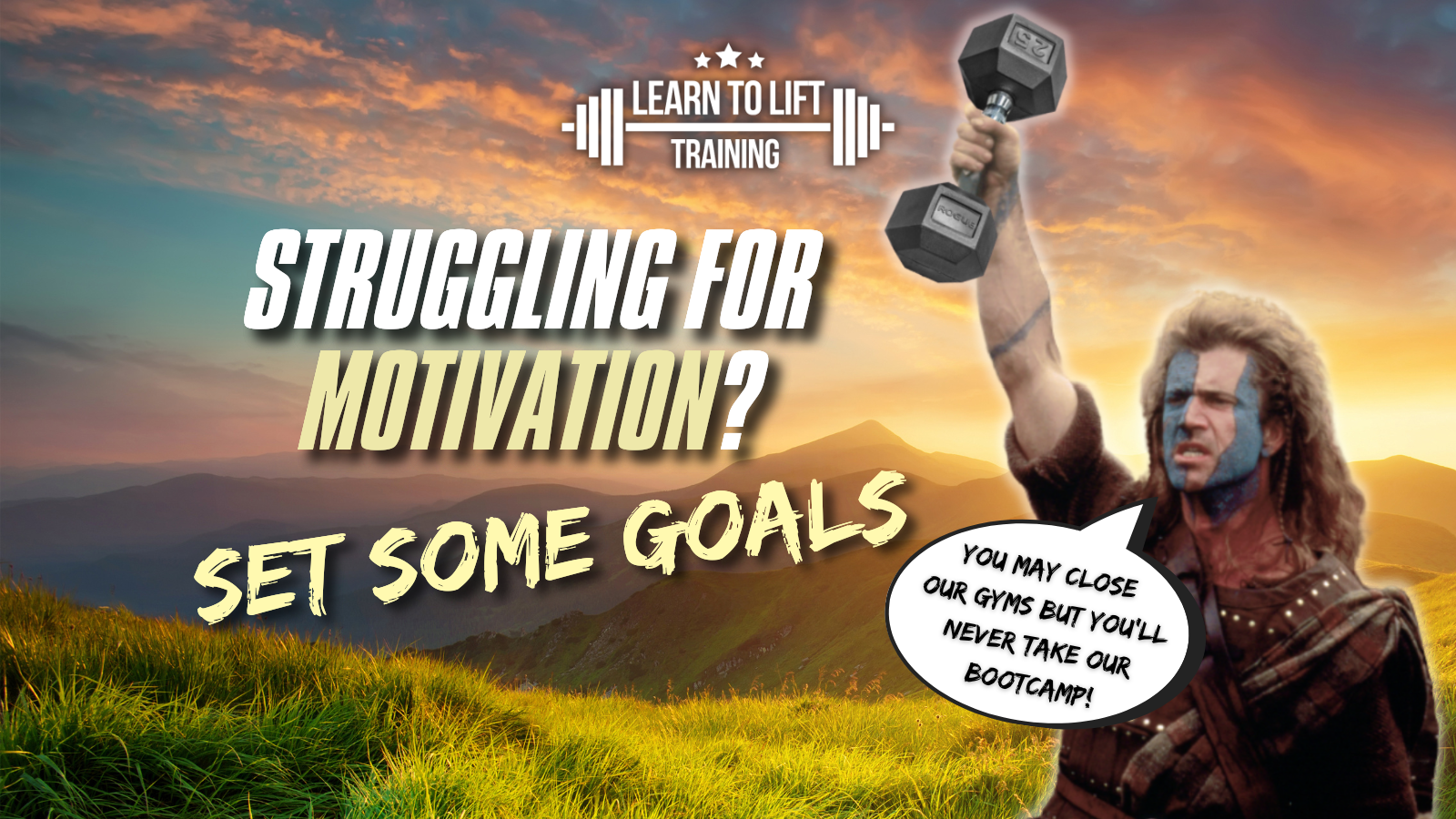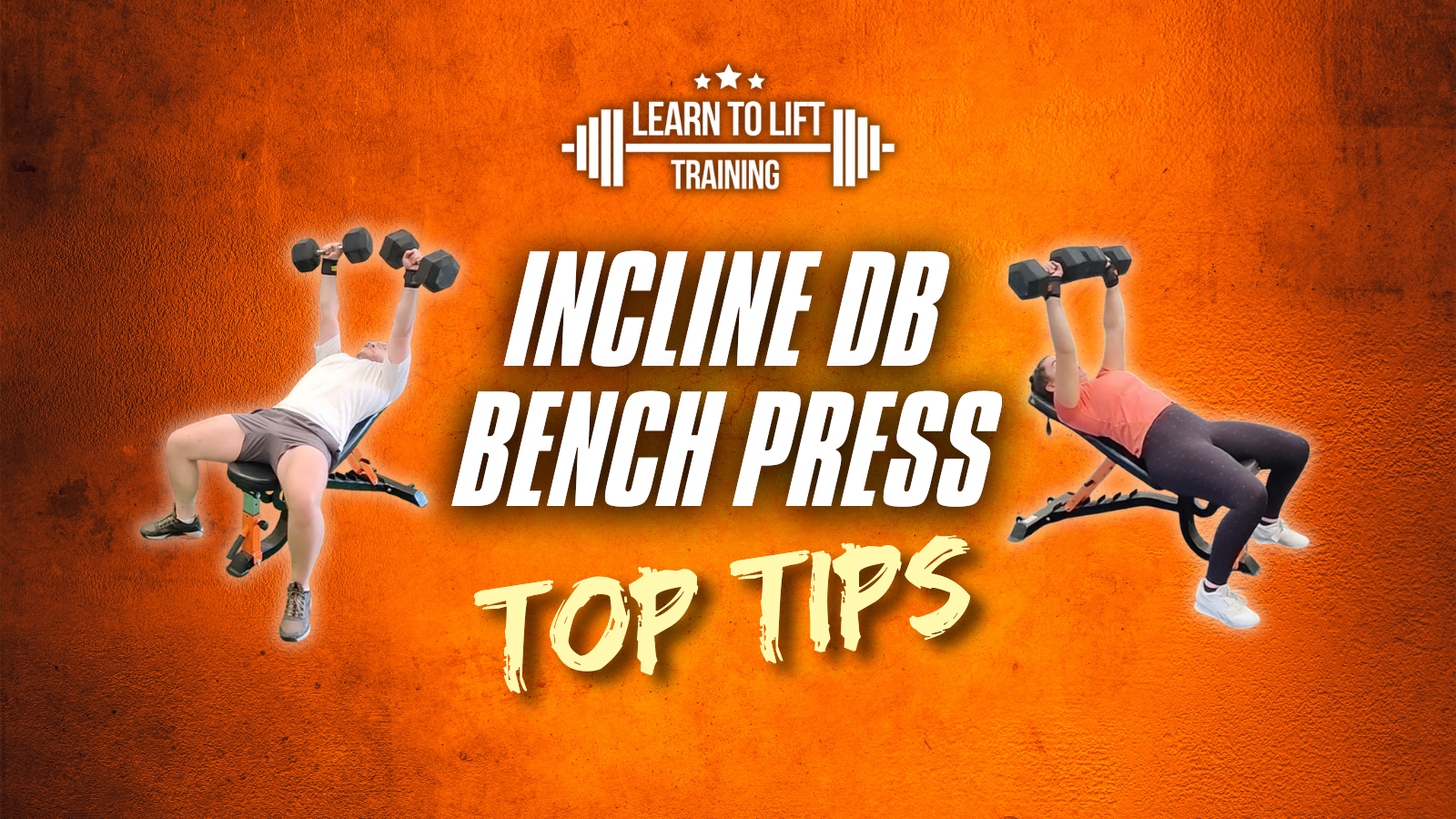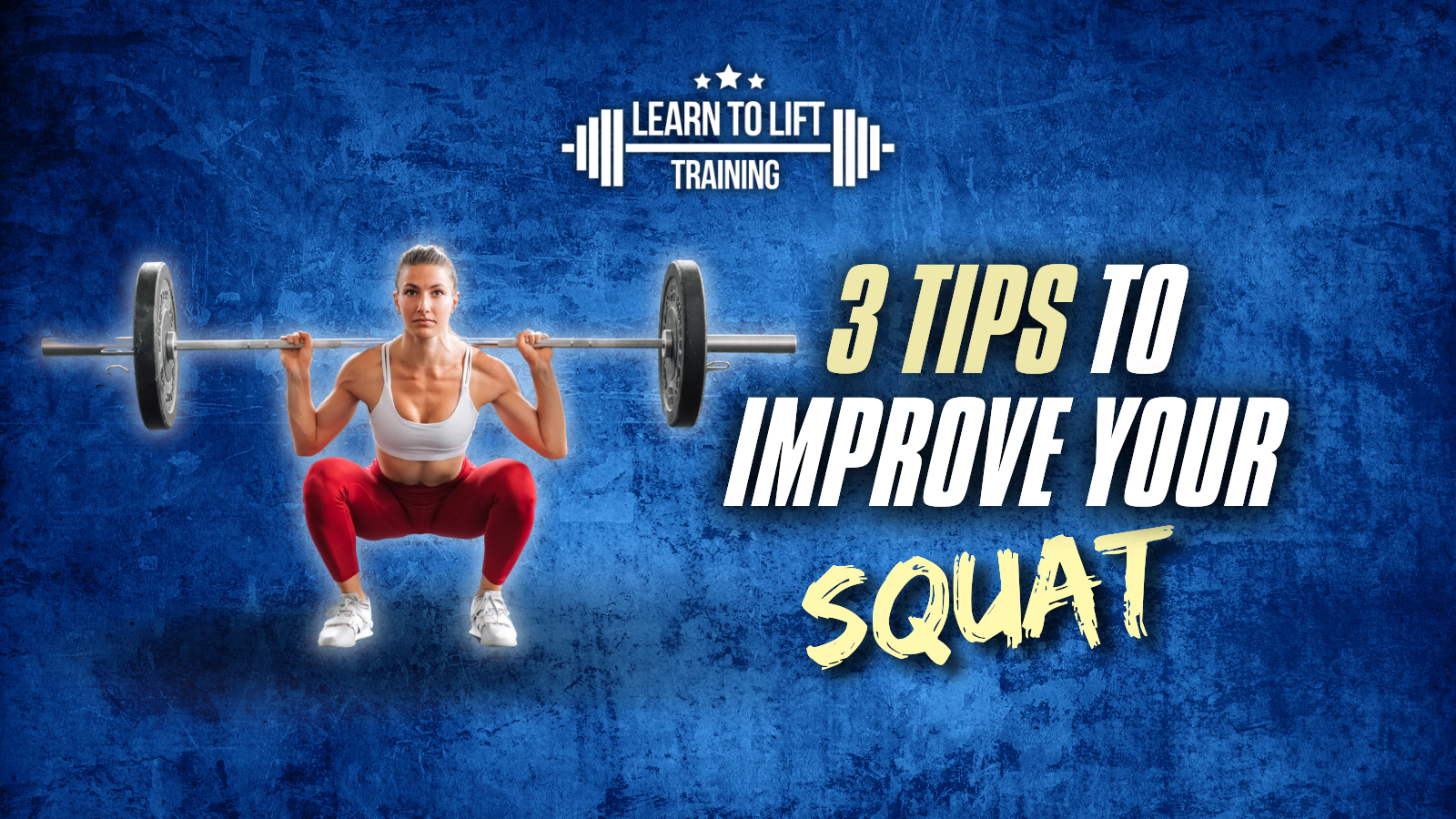Top Tips for Beginners From A Glasgow Personal Trainer
Top Tips for Beginners From A Glasgow Personal Trainer
Weight training can feel intimidating when you’re just starting out, I hear this all the time from clients in my role as a Glasgow personal trainer. However, with the right approach, weight training is an incredibly rewarding way to build strength, improve your health, and boost confidence.
Whether your goal is to tone up, gain muscle, or simply feel stronger, these beginner-friendly tips will help you kick off your journey safely and effectively. They are based on over 10 years of experience working as a Glasgow personal trainer helping people overcome their anxiety about training and teaching them how to get started with it.
Read on to learn my top 10 tips to help you start achieving your goals!
1. Start with Proper Form
Before you even think about lifting heavy, focus on mastering technique. Proper form prevents injuries and ensures you’re targeting the right muscles. Begin with bodyweight exercises like squats, push-ups, and lunges to get comfortable with movement patterns. When you’re ready to add weights, use light dumbbells or resistance bands and practice in front of a mirror—or better yet, ask a trainer or friend to check your form. Quality reps beat sloppy ones every time.
2. Pick the Right Weight
As a beginner, resist the urge to grab the heaviest dumbbell on the rack. Choose a weight that challenges you but still allows you to complete 10-12 reps with good form. If you’re shaking uncontrollably or compromising technique by the fifth rep, it’s too heavy. A good rule of thumb: you should feel fatigued by the end of your set, but not defeated.
3. Follow a Simple Program
You don’t need a complicated routine to see results. Start with a full-body workout 2-3 times a week, targeting major muscle groups (legs, back, chest, shoulders, arms, and core).
A basic plan that I might use with clients as a Glasgow personal trainer may include:
- Squats (legs and glutes)
- Bench press (chest and triceps)
- Bent-over rows (back and biceps)
- Plank (core)
Aiming for 2-3 sets of 8-12 reps per exercise, resting 2-3 minutes between sets, if often a good starting point. Consistency beats complexity for beginners.
4. Warm Up and Cool Down
Jumping straight into lifting is a recipe for pulled muscles. Spend 5-10 minutes warming up with dynamic movements like arm circles, leg swings, or a brisk walk. All the training sessions I perform with clients as a Glasgow personal trainer begin with a sensible and effective warm up, these help you perform at your best and significantly reduce any chances of injury.
After your workout, cool down with static stretches—hold each stretch for 20-30 seconds to improve flexibility and reduce soreness. Your body will thank you the next day.
5. Rest and Recover
Muscles grow when they rest, not when you’re lifting. Avoid training the same muscle group two days in a row—give it at least 48 hours to recover. Sleep is your secret weapon here; aim for 7-9 hours a night to support muscle repair and overall energy. Overdoing it early on can lead to burnout or injury, so listen to your body.
A good way to think about things is that training is the stimulus for your body to change, rest and recovery is what allows it to happen.
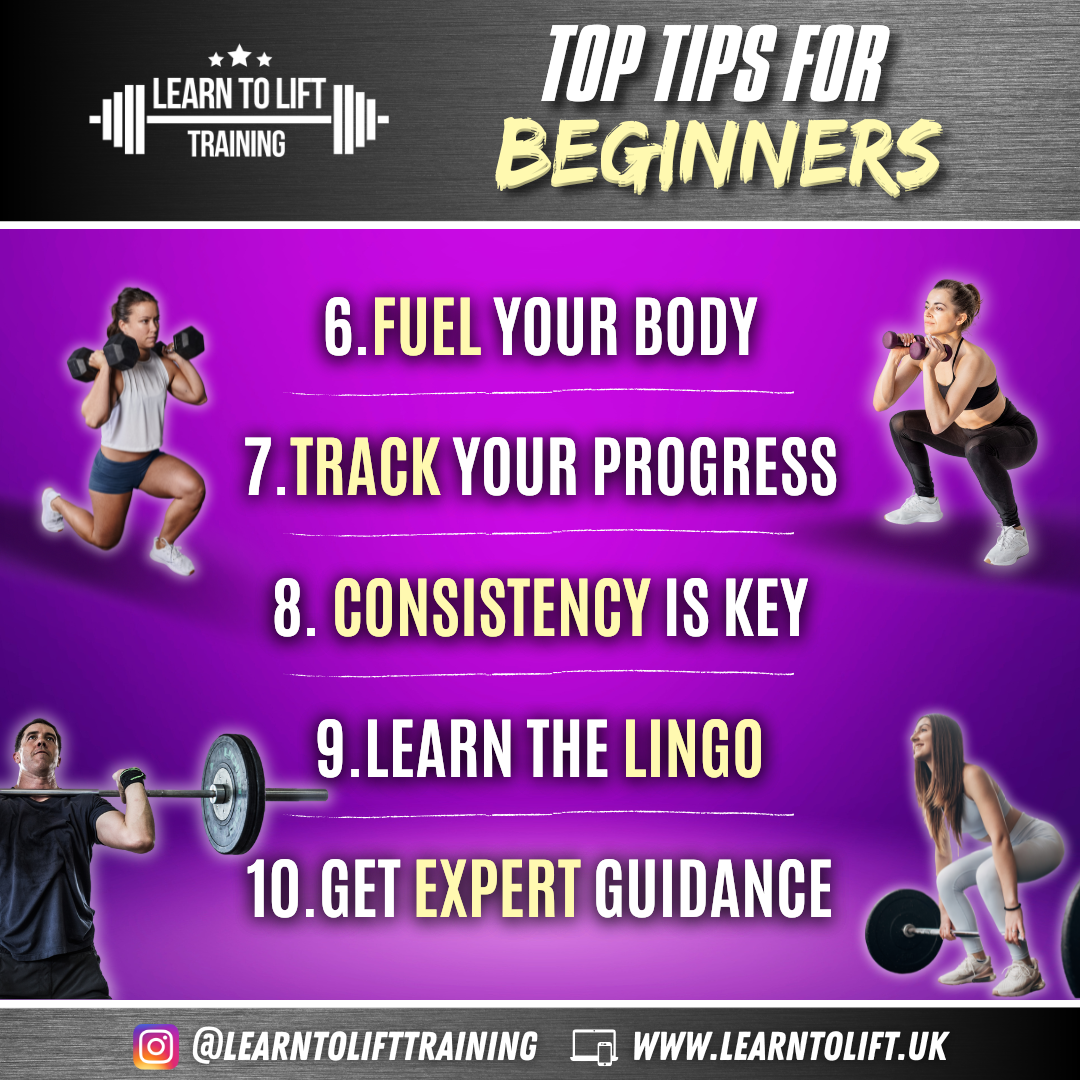
6. Fuel Your Body
Weight training demands energy, so don’t skimp on nutrition. Eat a balanced mix of protein (chicken, eggs, tofu), carbs (rice, oats, sweet potatoes), and healthy fats (avocado, nuts, olive oil). A small snack with protein and carbs—like a banana with peanut butter—before and after your workout can boost performance and recovery. Stay hydrated, too; even mild dehydration can zap your strength. Be sure to consult a qualified professional or nutritionist if you have any specific needs or are unsure of how to approach things.
7. Track Your Progress
Keep a simple log of your workouts—weights used, reps completed, and how you felt. Progress isn’t just about lifting heavier; it’s also about doing more reps, feeling stronger, or moving better. Tracking keeps you motivated and helps you see how far you’ve come. Apps, a notebook, or even a spreadsheet work great.
A key element of my job as a Glasgow personal trainer is ensuring that we are following a structure plan customised to your goals and tracking each element of the training sessions to ensure we are constantly progressing towards achieving them.
8. Be Patient and Consistent
You won’t turn into a seasoned expert overnight, and that’s okay. Strength gains take time—typically 4-8 weeks to notice changes and even months and years to achieve bigger goals—so stick with it. Show up, even on days you’re not feeling 100%, and focus on small wins. Consistency trumps perfection every time.
9. Learn the Lingo
Gym jargon can be overwhelming, so here’s a quick cheat sheet:
- Reps: Repetitions, or how many times you perform a movement.
- Sets: A group of reps (e.g., 3 sets of 10 reps).
- PB: Personal best, your best lift or performance.
- DOMS: Delayed Onset Muscle Soreness, that stiff feeling 1-2 days after a workout (normal for beginners!).
10. Get Expert Guidance with Learn To Lift Training
The best way to fast-track your results is to seek expert help and coaching. A Glasgow personal trainer can take all the guess work and trial and error out of things for you, and help set you on the right path towards achieving your goals.
Learn To Lift Training offers fantastic options for beginners, including our Learn To Lift Bootcamp Glasgow and 1-2-1 personal training in Glasgow. Perfect for those new to lifting, these programs provide hands-on guidance, ensuring you learn proper techniques and build confidence from day one. Check these out to start benefiting from professional coaching in a fun and friendly environment!
Final Thoughts
Weight training is a journey, not a race. Start small, stay curious, and celebrate every milestone—whether it’s lifting a heavier dumbbell or just feeling more energised.
With these tips, you’re well on your way to building a stronger, healthier you. Now get to the gym and get lifting!
